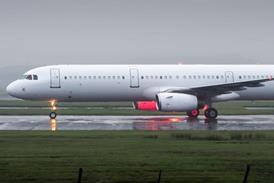Successful trials pave way for development of high-altitude platform able to fly for three years and transmit data
A European-Japanese prototype high-altitude platform could be flown next year following successful trials last month of associated radio link technology.
The work is being carried out under the €6 million ($7.2 million) European Union Sixth Framework research project Capanina, which aims to develop a high-altitude airship able to transmit broadband internet data to stationary and moving users, at rates of up to 120Mb/s. The airship could be 200m (655ft) long and weigh 30t, with a payload of 1t. It would be able to stabilise its position to within 1km (0.5nm) and fly for three years, with some power generated from on-board solar cells.
“With Capanina, we are trying to stimulate interest from the aeronautical sector in Europe in high-altitude platform development,” says UK University of York project leader Alan Gobbi. US company Sanswire Networks already has technology that could be of interest, Gobbi says. Its unmanned Stratellite platform has solar-powered engines and proprietary “lifting-gas technology” to maintain position at a target altitude of 65,000ft, which is above the jet stream for stability reasons.
Capanina has 13 partners, including its Japanese participants, the National Institute of Information and Communications Technology and Japan Stratosphere Communications. They are involved in a similar Japanese government-funded high-altitude platform project.
ROB COPPINGER/LONDON
Source: Flight International




















